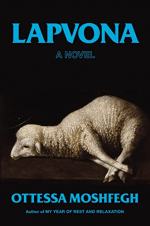|
This section contains 1,159 words (approx. 3 pages at 400 words per page) |

|
Point of View
Lapvona is told in the third-person omniscient, with an all-knowing narrator divulging the inner thought processes of several characters in and around the village of Lapvona. Indeed, even characters whose roles are extremely minor are given a sense of narrative interiority (such as Petra and Luka). This flexible and shifting mode of narration allows Moshfegh to thoroughly deconstruct the pathologies and thought processes of her characters, an adaptable quality that is necessary to the function of the text, which is concerned primarily with understanding the effects of such social factors as wealth, privilege, and religion on the lives of the people impacted by them.
Moshfegh also uses this form of narration to provide the reader access to information that certain characters whose perspective the third-person narrator exploits do not themselves have. Since Moshfegh’s novel is predicated on themes of deceit and misapprehension, it is...
|
This section contains 1,159 words (approx. 3 pages at 400 words per page) |

|




